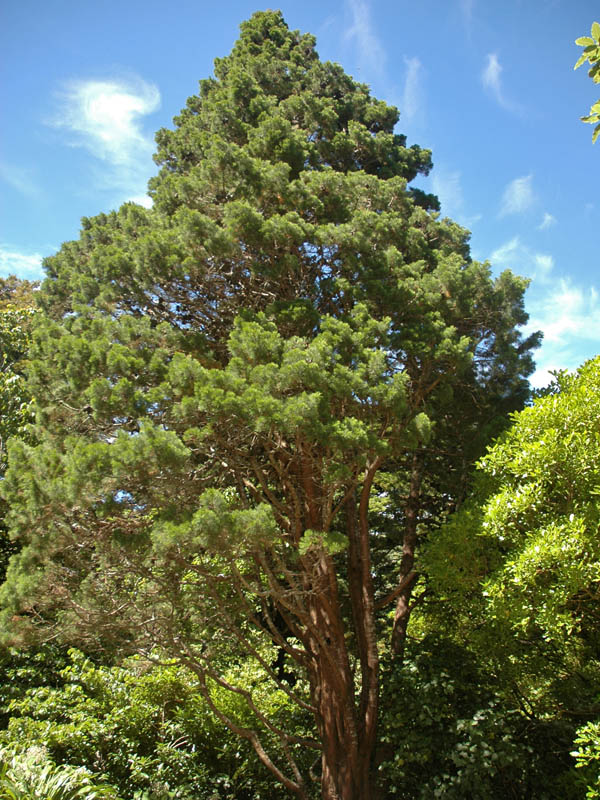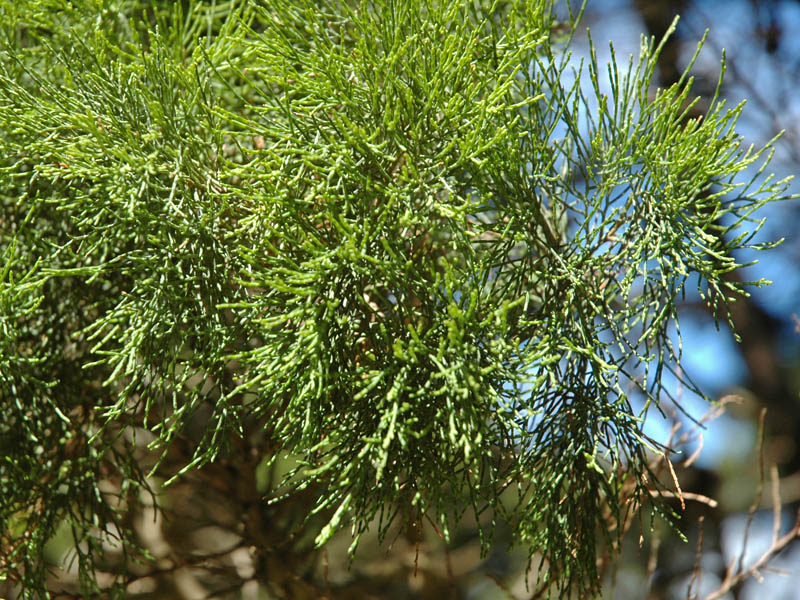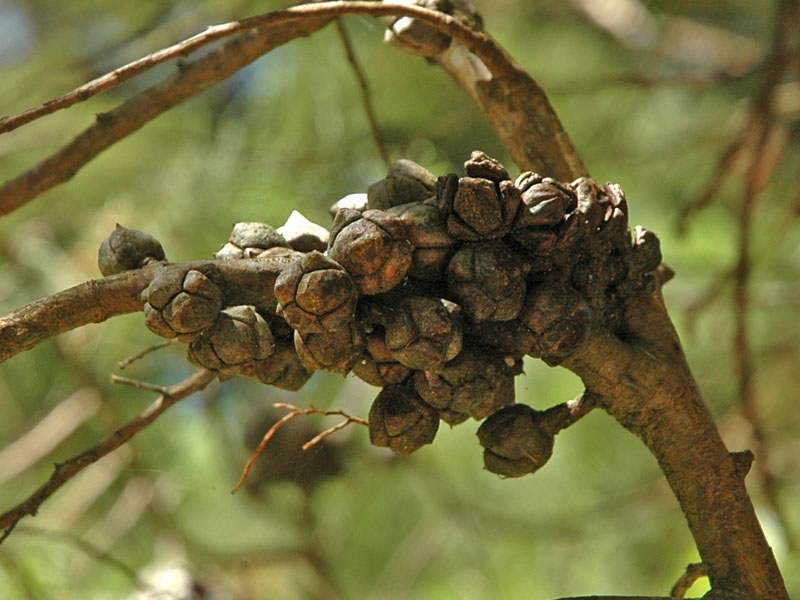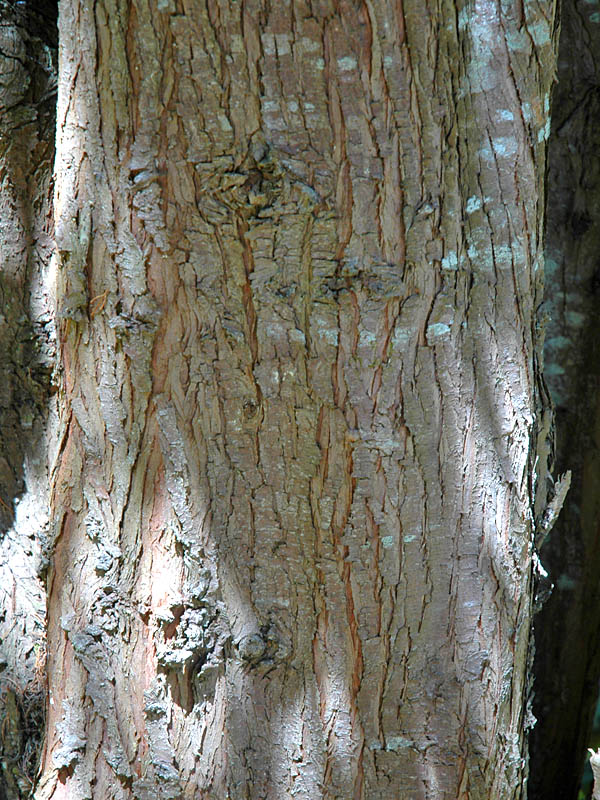
Tropicals, Woody > Callitris > Callitris rhomboidea > Callitris rhomboidea
Callitris rhomboidea
Oyster Bay Pine
Origin: Native to South Australia, Queensland, New South Wales, Victoria and Tasmania.
| Family |
| Cupressaceae |
| Genus |
| Callitris |
| Species |
| rhomboidea |
| Category |
| Tropicals, Woody |
| Type |
| Tree (evergreen) |
| Pronunciation |
| USDA Hardiness Zone |
| 8a - 11 |
| Canadian Hardiness Zone |
| 8b - 9b |
| RHS Hardiness Zone |
| H7 |
| Temperature (°C) |
| -1 |
| Temperature (°F) |
| 24 |
| Height |
| 9 - 15 m |
| Spread |
| 2 - 3 m |
Photographs
Description and Growing Information
Flowering Period
| General Description |
| It bears light green glaucous leafs and closely spaced branching forming a pyramidal tree. Its male cones are small and a dark brown, singly or in clusters while the larger female cones are clustered on fruiting branchlets and can remain there long after maturity. |
| Landscape |
| Use as a shade tree. |
| Cultivation |
| Can be grown in full sun to partial shade. Is very drought tolerant but should not be planted in poorly draining soils. Should be planted at the end of summer – this allows for optimal growth and establishment of the seedlings. Trimming into a hedge is optional. If left to grow unhindered a pyramidal shape will form over time. |
| Shape |
| Vertical, small, pyramidal top. |
| Growth |
| Medium |
| ID Characteristic |
| It has dark grey cones usually found in clusters. The light green leaves form into a whorl formation, with the adult usually bearing whorls of three. Throughout the branch length, its weaving formation creates a dense copy in a pyramidal shape. |
| Pests |
| Few pests are an issue for the Oyster Bay pine, but it does have issues with fires in its dry native environment. It can regrow after being burnt, but if burnt severely enough it will die. Grazing sheep can destroy seedlings. |
| Bark/Stem Description |
| The bark is a smooth dark brown, weathering over time into a dark grey. Some seed variances, as well as different environments, have produced a more rigid, textured and coarser bark. |
| Flower/Leaf Bud Description |
| Oval shaped, 3 mm long. |
| Leaf Description |
| Glaucous light to dark green leaves that are 1.5-4 mm long, forming a whorl formation of 3 once mature. |
| Flower Description |
| Flowers are perfect and they occur in clusters. Each flower is approximately 1.5 cm in diameter with five white petals and pink anthers. |
| Fruit Description |
| Male cones are orange, small and round, individually or clustered and are typically 1-2 mm long. Female cones are much larger and longer at 2.5-4 mm, dark grey colour, once mature, cones may remain on the tree for years. |
| Notable Specimens |
| A notable specimen was documented in 2012 in Nelson Square, Picton, New Zealand. The tree recorded there was actually bigger than any found back in its native homeland. |
| Propagation |
| Propagate by seed. Break open cones releasing the seeds inside (about 40, half of which are viable). Sow at the end of summer. Seeds should germinate after 3-4 weeks and be established by the following year. Ground covers such as Tussock grass can be used to optimize the nursing of the seeds. Pests such as sheep can be avoided by using dead tree limbs to protect the plant. Plant 3-4 m apart. |
| Ethnobotanical Uses (Disclaimer) |
| In the past the lumber from the Oyster Bay Pine was used by aboriginals. Modern uses of the tree include fine cabinetry and wood lining for the interior of boats. |
References
Key to Tasmanian Dicots. (n.d.). Retrieved March 24, 2016, from http://www.utas.edu.au/dicotkey/dicotkey/CONIFERS/sCallitris_rhomb.htm Landscape architect's pages. (n.d.). Retrieved March 24, 2016, from https://davisla.wordpress.com/category/oyster-bay-pine/



